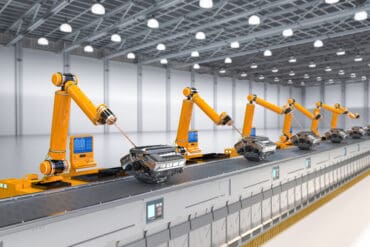
Strategic deployment of AI-driven chatbots can help economies pivot more quickly in response to global events.
There’s a sharp dividing line between citizens able to stay home and those “essential” workers risking their health to be present at their job sites. Retail, grocery store, and certain employees of the restaurant field can’t stay home. Still, companies are using modern solutions to reduce the pressure and risk for essential workers while providing the same level of service.
Once we cracked the natural language code, chatbots helped companies develop comprehensive customer strategies for an online world. Suddenly, companies could monitor all market channels and reduce the load on customer service staff by deploying chatbots to answer simple questions without consumers ever knowing the difference.
See also: Recruitment Chatbots Better Engage Today’s Workforce
AI During a Crisis
That popularity flatlined the last few years, but the COVID-19 upheaval has seen a resurgence in not just their popularity, but their usefulness. Companies are turning to chatbots, robot assistance, and other forms of AI to provide essential services while caring for their employees in what is an unprecedented global disruption.
COVID has caused a two-fold disruption:
- Fewer workers able to complete typical workplace tasks, including those who’ve contracted COVID, those with compromised immune systems, and those under quarantine restrictions.
- Greater demand for information, i.e., when restocks happen, rescheduled events, inventory lists, and other necessary customer service information.
We know that people are more than willing to converse with chatbots through messaging apps, based on a Facebook study done back in 2018. And now, companies are revamping their chatbot capabilities to pivot quickly, ensuring consumers have access to company information and service when typical operations are at a standstill.
Businesses can use chatbots to handle communications in a changing business environment and reassure consumers. Chatbots also reduce the person to person contact, helping shelter essential workers, and relieve pressure.
For example, grocery store chain Albertsons rolled out what the chain calls “Micro-fulfillment” centers, small areas in the back of the store where customers can pick up online orders. Two of those locations are using robots to fulfill customer orders.
Other robot assistants are also making the rounds, including state of the art physical robots such as this one deployed at a Walmart flagship store. They complete vital administrative tasks such as inventory checking and cleaning task. As we navigate COVID-19, we could find ourselves with better AI-driven protocols for future business disruptions.
Navigating Global Disruption with AI
Chatbots help get the word out about vital changes to business operations. While the news has focused mainly on the inconsistencies of chatbots used to monitor and deliver information about COVID itself, companies are finding success differently.
Global disruption doesn’t bring business to a halt, but it is a considerable obstacle. Strategic deployment of AI-driven tools such as chatbots, robot assistants, and even healthcare tools can help economies pivot more quickly in response to global events.



























